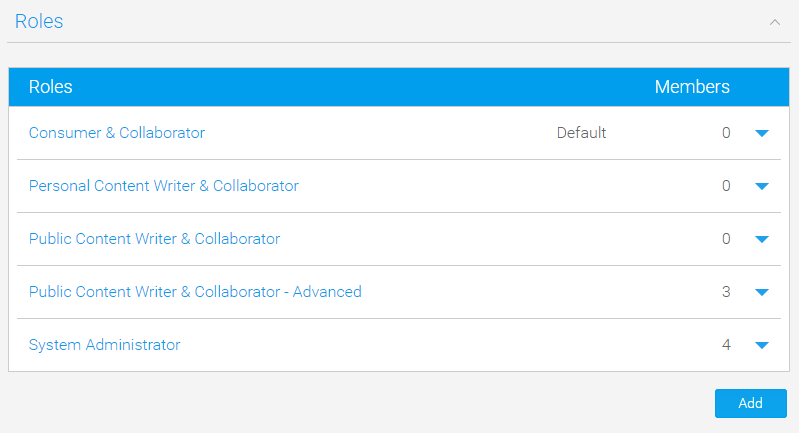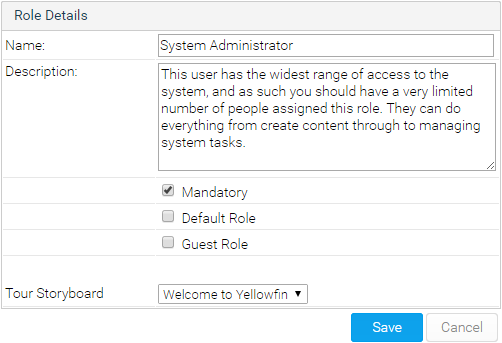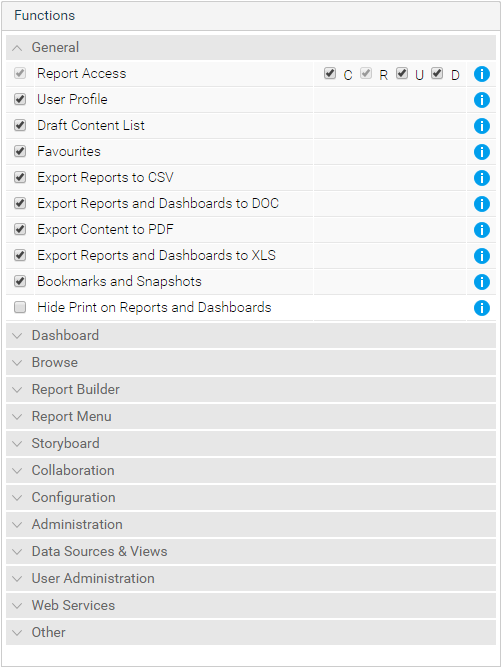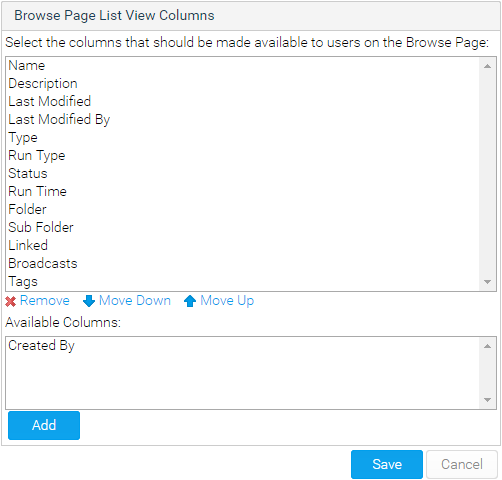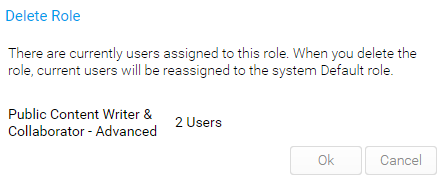Page History
...
| Styleclass | ||
|---|---|---|
| ||
Sample Yellowfin Roles
...
| Class | topLink |
|---|
...
When Yellowfin is initially deployed a standard set of roles is provided to you. These are:
...
Administrator
...
The Yellowfin Administration role has access to database and user administration functions. These functions include managing users, groups and other configuration parameters.
It also has all the report writing and reading access supplied by the other roles below plus advanced functions, including:
SQL Reports, Public Publishing, Drill Through Reports, Discussion Admin Rights.
...
Public Writer
...
The Yellowfin Report Public writer has access for creating and editing Public reports.
All users that are to publish reports for Public use must have the Public Role to do so.
Reports created by a Yellowfin Public Writer can include drill through reports, multicast reports, and report emailing.
...
Report Consumer
...
The Yellowfin Report Consumer can only read reports that have been published to the Public repository.
Access exists to favourites, a dashboard and report viewing.
...
Report Writer
...
| Role | Description |
|---|---|
Consumer & Collaborator | This user can only access public content and contribute to collaborative features such as streams, timeline, etc. |
| Personal Content Writer & Collaborator | This user can only create personal content for their own consumption - not public shared content. They can collaborate within streams, timeline, etc. |
| Public Content Writer & Collaborator | This user can create content to be consumed by themselves and other users in the system. They can collaborate using features such as streams, timeline, etc. |
| Public Content Writer & Collaborator - Advanced | This user can create content to be consumed by themselves and other users in the system. They can collaborate using features such as streams, timeline, etc. This user also has extended access to create and manage views, report approval, and other admin items. This role should be used sparingly. |
| System Administrator | This user has the widest range of access to the system, and as such you should have a very limited number of people assigned this role. They can do everything from create content through to managing system tasks. |
Create Role
| Styleclass | ||
|---|---|---|
| ||
- Click on the Add button located at the bottom of the Roles list in the Admin Console
- You will now be taken to the Role Details page and will need to define these components:
- Provide a meaningful Name and Description that outlines the purpose or use of the role
Enable the role as Mandatory, Default, or Guest as required. (Optional)
Mandatory
This means that once this role has been created, and at least one user assigned the role, when users are deleted Yellowfin will check the role to ensure there is always at least one user with this role in the system. So if you try to delete the only user assigned the Mandatory role you will experience the following error:
Default Role
This means that when a user is created in Yellowfin, either by an Administrator, or through LDAP, they will be assigned this role unless otherwise specified
Guest Role
Guest roles are used for accessing external content.
- Select an existing public storyboard to present to new users from the Welcome page. (Optional)
- Enable/Disable functions as required. A description of each function is available by hovering over the info icon on the right hand side.
Note: See Available Security Functions for a full list.
Define the CRUD permissions where required. Some functions will have a C R U D check list as part of the settings. The acronym CRUD refers to all of the major functions that need to be implemented. Each letter in the acronym can be mapped to a standard SQL statement:
Create
INSERT new records
Read
SELECT records from the database
Update
UPDATE records in the database
Delete
DELETE records in the database
One example of CRUD access is for dashboards. If a user only has R selected they will be able to read dashboard but not create new dashboard tabs or add reports to their tabs. Whilst a user with CRUD will be able to create and delete dashboard tabs.
- The last option you have in the role settings is to specify what columns should be made available to users when viewing the report list.
- Click Save when you have completed editing to make your role available.
Note: Yellowfin will do a function check to ensure you do not breach your license agreement.
Edit/Copy Role
| Styleclass | ||
|---|---|---|
| ||
Delete Role
| Styleclass | ||
|---|---|---|
| ||
Note: if there are users attached to a role you choose to delete, the users will also be removed from the system.
...
